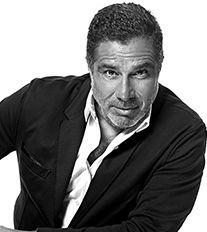Vidéo du Dr.BernardHayot
Blepharoplasty
Blepharoplasty is often the first rejuvenation operation practised in cosmetic surgery. It is not uncommon for people to have blepharoplasty from the age of 40, although lifting is generally not considered until after the age of 50. Blepharoplasty makes it possible to rejuvenate the eyes, the first area where ageing takes visible effect on the face.

“I have been practising blepharoplasty and all techniques of eyelid surgery for more than 25 years. At the forefront of innovative techniques and avant-garde solutions, my vision for rejuvenating cosmetic surgery continues to evolve.
In 2015, following the Centrofacial Rejuvenation convention in Belgium, I was able to observe the incredible results of addition blepharoplasty, which is a new revolutionary technique that makes it possible to rejuvenate the eyes by adding volume to the eyelids rather than by removing it from the skin or the fat of my patient’s face.
Since the discovery of this surgical technique, I almost systematically combine addition blepharoplasty with a classic skin or fat resection. I carry out the filling and volume restoration using micro lipofilling : precise injections, with millimetre accuracy, which enable me to restore the volumes using my patient’s own fat.”
Pour une meilleure expérience de notre module, consultez le site sur votre mobile.
Je suis très heureux de vous retrouver.
Je vous informe avoir mis en place une reprise progressive des rendez-vous et de la chirurgie au bloc opératoire.
La téléconsultation sera maintenue le lundi et jeudi pour limiter vos déplacements. Elle sera facturée 50 euros.
Des mesures sanitaires sont mises en oeuvre pour garantir votre sécurité, une désinfection après chaque patient.
Toute l'équipe médicale est déjà formée aux règles d'hygiène et aux mesures barrières. Ces règles seront renforcées dès lundi.
2 commentaire(s)
Aleksandra
/
14/10/2021
Hello Dr.Hayot, I would like to make a blepharoplasty of upper eyelids and malar pockets. Do i need first a consultation? Some analysis? How much would cost consultation and hole surgery? Thank you for your answer!
DrHayot
/
01/12/2021
Dear Aleksandra, Thank you for your trust. Don't hesitate to send me a photograph on my email for a first advice and more details about surgery: info@drhayot.com Best regards.